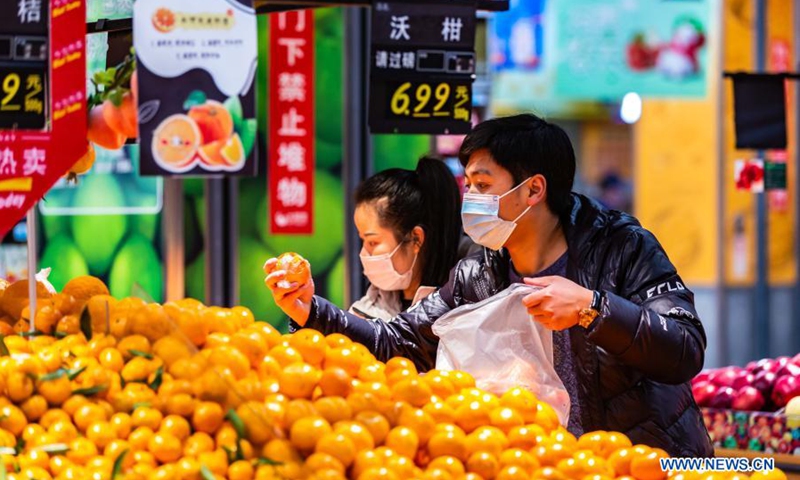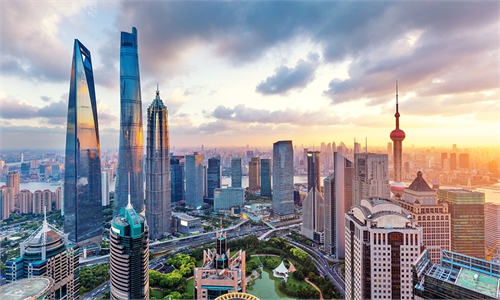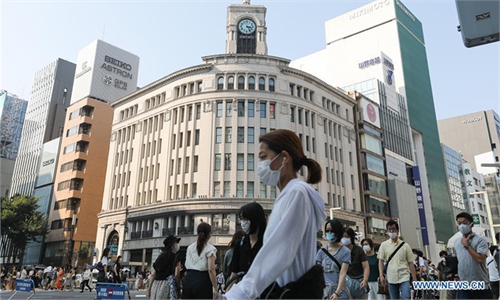China's retail sales, industrial output edge up in October
Retail sales, industrial output edge up in October

People select food at a supermarket in Xixiu District of Anshun, southwest China's Guizhou Province, March 10, 2021. China's consumer price index (CPI), a main gauge of inflation, declined 0.2 percent year on year in February due to a higher comparison base last year, data from the National Bureau of Statistics (NBS) showed Wednesday. Food prices went down 0.2 percent year on year, dragging down the consumer inflation by 0.05 percentage points, according to the data.(Photo: Xinhua)
China's economy delivered better-than-expected numbers in October as retail sales and industrial production went up, consolidating a sound recovery and economic momentum despite multiple headwinds such as energy shortages, a property sector slump, and the resurgence of COVID-19 outbreaks.
Industrial production and retail sales beat the consensus forecasts. Industrial output picked up, increasing by 3.5 percent year-on-year, compared with 3.1 percent in September, while industrial value-added from January to October increased 10.9 percent on a yearly basis, data from the National Bureau of Statistics (NBS) showed on Monday.
Retail sales reached 4.05 trillion yuan ($630 billion) in October, up 4.9 percent year-on-year. The rate was 0.5 percentage points higher than the previous month.
It was the second consecutive month that the year-on-year growth of China's retail sales accelerated pace, after the rate slowed for six months in a row to this year's lowest point of 2.5 percent in August.
From January to October, total retail sales reached 35.85 trillion yuan, an increase of 14.9 percent compared with 2020.
Investment in fixed assets from January to October rose 6.1 percent on a yearly basis, which was below market expectations. The growth rate also slowed from the 7.3-percent recorded for the first nine months as a cooling property market r weighed on the economy.
"Although China was affected by sporadic COVID-19 flare-ups, energy shortages and extreme weather in October, the country's economy remained resilient," Cong Yi, a professor at the Tianjin University of Finance and Economics, told the Global Times on Monday.
Analysts said that the better-than-expected industrial production figure indicated that the world's second-largest economy is gradually emerging from the shadows of the electricity supply crunch, which subdued output, after authorities took sweeping measures to stabilize energy supplies.
Zhou Jingtong, a senior economist from the Academy of the Bank of China, told the Global Times on Monday that entering October, due to the easing of energy shortages and the decline of extreme weather events, China's economy witnessed a better-than-expected recovery.
Analysts noted that the impact of the power shortage will dissipate in the remaining months of the year.
As for the gain in retail sales, observers said it was partly driven by burgeoning consumption during the seven-day National Day holidays, which started on October 1. Consumer sentiment is poised to continue running high as the nation kicked off the Double 11 shopping festival - the world's largest shopping carnival - with record sales and as the New Year holidays draw near.
Cong noted that China has a large population, and that to date 400 million people have reached the middle-income level, so consumption will remain stable.
Fu Linghui, a spokesperson from the NBS, said at a press briefing in Beijing on Monday that the economy seems to be showing signs of stagflation amid a slowdown of economic growth in the third quarter and a rapid climb of the producer price index (PPI) as a result of rising commodity prices and tightened supplies of raw materials.
"But this is due to short-term factors and is a transitory situation," Fu said.
Lu Ting, chief China economist for Nomura Holdings, said in a statement sent to the Global Times on Monday that China's CPI inflation will rise to 2.5 percent in November, from 1.5 percent in October.
Observers said the rise in the PPI will inch down slowly in November, after expanding by 13.5 percent in October, the highest since 1995.
Lu said that heading into the winter, the COVID-19 resurgence may last longer than expected, which, combined with a weakening property sector, may further weigh on the economy in the remainder of the year.
Zhou noted that the government may further promote smooth functioning of the real estate market, in order to stabilize this segment and mitigate the sector's negative impact on the economy.
Moreover, authorities may guide market interest rates downward to ease corporate liquidity crunch and lower the threshold of social financing, said Zhou.
Cong noted that China's economy will maintain stable and progressive during the fourth quarter, and the country will have no difficulty in meeting its annual GDP growth target of 6 percent.
Zhou said that the growth of GDP in the fourth quarter is expected to stand at between 4 percent and 4.5 percent, while the yearly growth rate will reach 8 percent in 2021.



